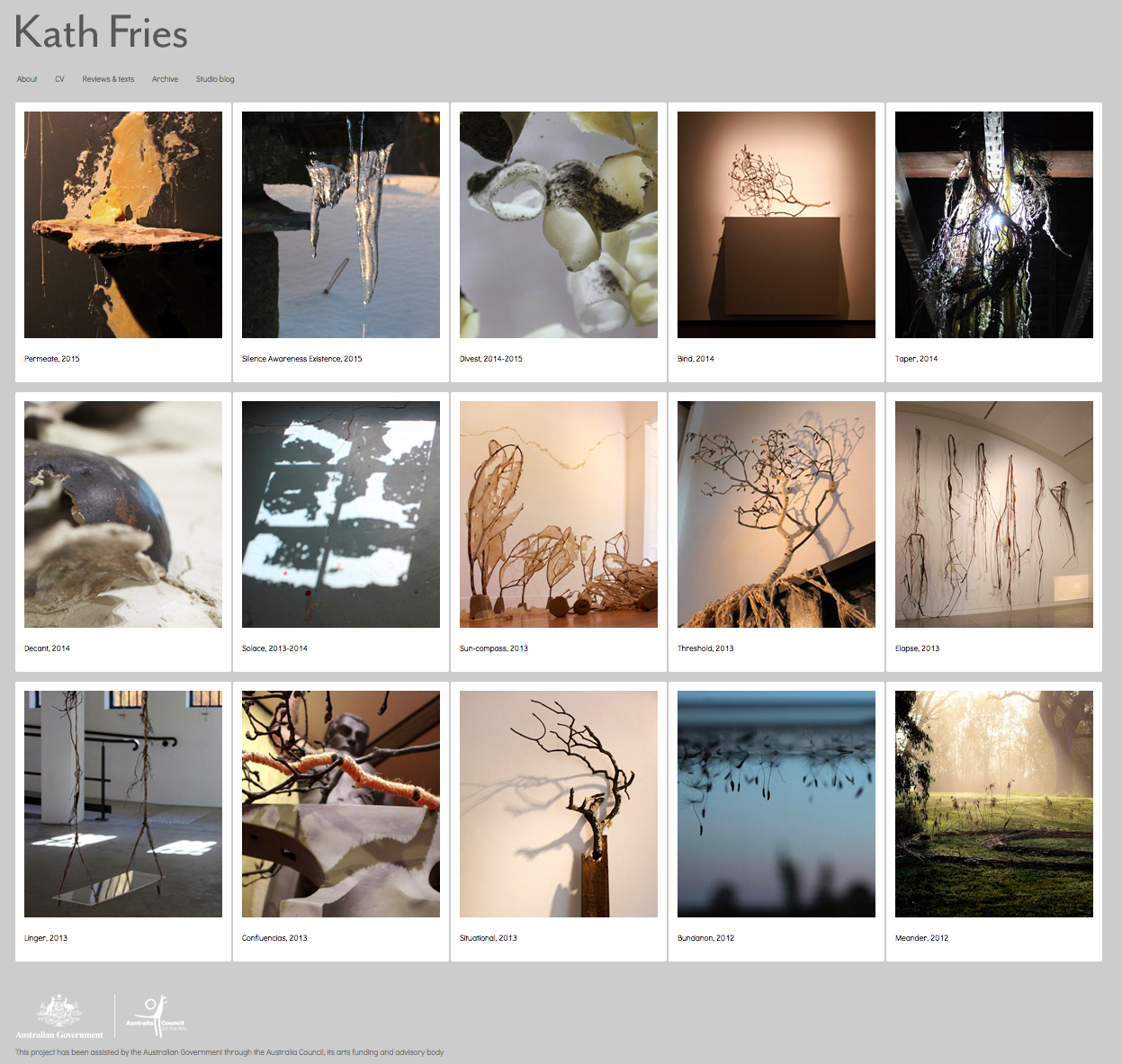 |
| Kath Fries, Permeate, 2015, beeswax and sandstone shards, 300x400x600cm |
Permeate is an immersive installation reflecting on my experiences of sitting quietly on a rocky outcrop overlooking Wollemi National Park, each evening while I was an artist-in-residence at BigCi, Bilpin NSW. These were contemplative engagements with site, observing my surroundings as the late afternoon light and shadows changed with the
setting sun then merged into twilight, which conjured an embodied sense of present
time, of completely being there. My awareness incorporated not just what I could see - the view
and the tree tops - but also the smell of the air as I breathed in and out, the touch
of the cold sandstone I was sitting on, and my emotive state. Beyond my bodily boundaries I could also sense the ancientness of the rocky
escarpments, supporting diverse
and intriguing ecosystems that are mostly unseen by our human eyes, yet felt on other levels.
 |
| Kath Fries, Permeate, 2015, beeswax and sandstone shards |
In the gallery, a dark secluded space houses Permeate, this separateness invites the
viewer to feel immersed in the work without distractions. It offers the
potential for embodied sensory contemplation, experiencing the honey fragrance of the beeswax, the tactility of the jutting sandstone shards and the wall’s dripping splatters of
beeswax that seem to ooze from within. Each rock consists of its own layers of historical time, coloured with clay, ochre, grit and sand; like rock-climbing-handholds each stone can be plateau for one’s eyes
and thoughts to rest upon, or jump between rock-hopping through a micro
interpretation of the Bilpin Wollemi landscape, of imaginative reflection and
exploration.
 |
| Kath Fries, Permeate, 2015, beeswax and sandstone shards, (detail view) |
One of the most intriguing and unique aspects of the
geological ecosystems in the Bilpin Wollemi area, is the poetically named 'hanging swamps', which are formed over long periods of time as the thick porous sandstone
cliffs absorb large amounts of rainwater, like giant sponges. This water builds
up against the thinner impermeable strata layers of claystone and ironstone,
shunting it sideways along the resistant stratums, so the groundwater trickles
out continuously, providing constant moisture. The reliable dampness forms patches of swamp conditions with
damp peat-rich soil, which nurtures and sustains the surrounding vegetation on
the seemingly inhospitable steep rocky escarpments.
 |
| Kath Fries, Permeate, 2015, beeswax and sandstone shards, (detail view) |
Permeate's jutting rocks were collected in the Bilpin Wollemi region near some hanging swamps. Most of the pieces are the size of my hands, the act of holding and collecting them formed an additional physical engagement with materiality and site, which was developed further as I scrubbed away layers of dirt from the stones, revealing their colourful contrasting strata layers.
 |
| Kath Fries, Permeate, 2015, detail view - beeswax on wall |
The beeswax in Permeate echoes the rain precipitation and seeping movement of the water in the hanging swamps. It also refers to another
layer of the ecosystem’s interconnections, that of bees and other insects pollinating
the trees and plants of the area, which often go unseen and unacknowledged by us humans looking at the landscape.
 |
| Kath Fries, Permeate, 2015, beeswax and sandstone shards, (detail view) |
My residency at BigCi Bilpin, contributed to my PhD practice-led research
into embodied engagements with materiality and their capacity to be
synonymous with present time experience. By working with site-responsive processes,
seeking ways to connect with place and aspects of nature through
the entanglement of our senses with our surroundings, culminated in experimentations with tactile found materials to reflect on my personal experiences of the site and more broadly on the passage of time and fragility of life.
 |
| Kath Fries, Permeate, 2015, beeswax and sandstone shards |
I would like to thank Hawkesbury Regional Gallery for giving me the opportunity to create this work in their gallery as well as organising and supporting my residency at BigCi. My Permeate installation was part of the group exhibition Exploring BigCi, 19 June - 2 August 2015, shown along with work by previous BigCi artists-in-residence: Hyewon Hye Shim (Korea), Nandita Mukand (Singapore), Claudia Luke (Germany), Nicola Moss (Queensland), Chris Dolman & Paul Williams (Sydney), Crisia and Andrei Miroiu (Romania), and Rachel Peachy & Paul Mosig (Katoomba).
 |
| Kath Fries, Permeate, 2015, beeswax and sandstone shards |































%2BWhite%2C%2BBRANCH%2B3d.jpg)














.jpg)














